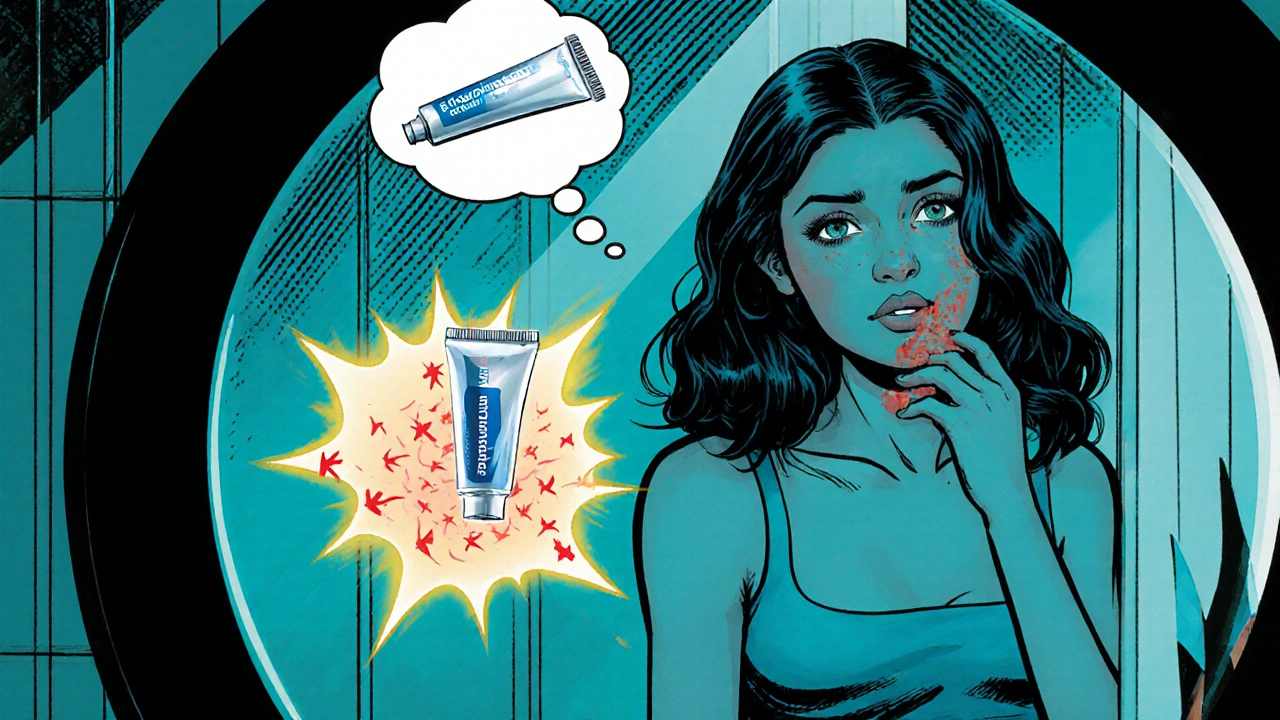Ingrown Hairs – What They Are and How to Handle Them
When dealing with ingrown hairs, a condition where a hair shaft curls back and pierces the skin, causing irritation or bumps. Also known as pseudofolliculitis barbae, this issue often shows up after shaving, waxing, or tight clothing. The hair grows sideways instead of straight out, which can lead to inflammation, infection, or unsightly scars. Understanding this process is the first step to keeping your skin clear and comfortable.
One of the most common companions of folliculitis, an inflammation of the hair follicle that may appear as red bumps or pustules is razor burn, skin irritation caused by aggressive shaving or dull blades. Both conditions share the underlying problem of hair trauma, and each can worsen the other. Proper shaving technique – using a sharp blade, moisturizing beforehand, and shaving in the direction of hair growth – reduces the risk of both rash and infected hairs. Another key player is exfoliation, the removal of dead skin cells that can block hair follicles. Regular exfoliation, whether with a gentle scrub or a chemical exfoliant, helps the hair exit the skin cleanly, cutting down the chance of it looping back. In addition, pseudofolliculitis barbae, a chronic form of ingrown hairs typically seen in beard areas of men with curly hair illustrates how hair texture and growth patterns influence severity. When hair is tightly coiled, it’s more likely to re-enter the skin, so treatments may include topical steroids, laser hair removal, or changing grooming habits.
Practical Steps to Prevent and Treat Ingrown Hairs
Preventing ingrown hairs starts with a clean shaving routine: wet the skin, apply a lubricating shave gel, and use a fresh blade. After shaving, rinse with cool water, pat dry, and apply a soothing aftershave that contains aloe or witch hazel to calm irritation. Incorporate exfoliation 2‑3 times a week to keep pores clear, but avoid harsh scrubs that could damage the skin barrier. If a bump does appear, warm compresses soften the skin, making it easier for the hair to emerge naturally. Over‑the‑counter options like salicylic acid or glycolic acid pads can reduce swelling and prevent infection. For stubborn cases, a dermatologist may recommend a prescription‑strength topical retinoid or a mild steroid cream to curb inflammation. In extreme situations, professional removal methods such as laser therapy or electrolysis offer a long‑term solution by reducing hair density. By aligning grooming habits with these evidence‑based practices, you can minimize the discomfort and cosmetic concerns that ingrown hairs bring.
Below you’ll discover a curated collection of articles that dive deeper into each of these topics—from understanding the science behind folliculitis to choosing the right exfoliant for your skin type. Whether you’re looking for quick tips or detailed treatment plans, the resources ahead will equip you with the knowledge to keep your skin smooth and healthy.
Eflornithine for Ingrown Hairs: How It Works and What to Expect
Discover how eflornithine can reduce ingrown hairs, how to apply it, compare alternatives, and get practical tips for smoother skin.
About
Skin Care and Dermatology
Latest Posts


The Impact of Idiopathic Pulmonary Fibrosis on Relationships and Social Life
By Marcel Kornblum Apr 30, 2023

Top Online Pharmacy Alternatives in 2025 to CanadaDrugsDirect.com
By Marcel Kornblum Jan 6, 2025

How to Buy Online Cheap Generic Metformin Safely
By Marcel Kornblum Sep 25, 2025

